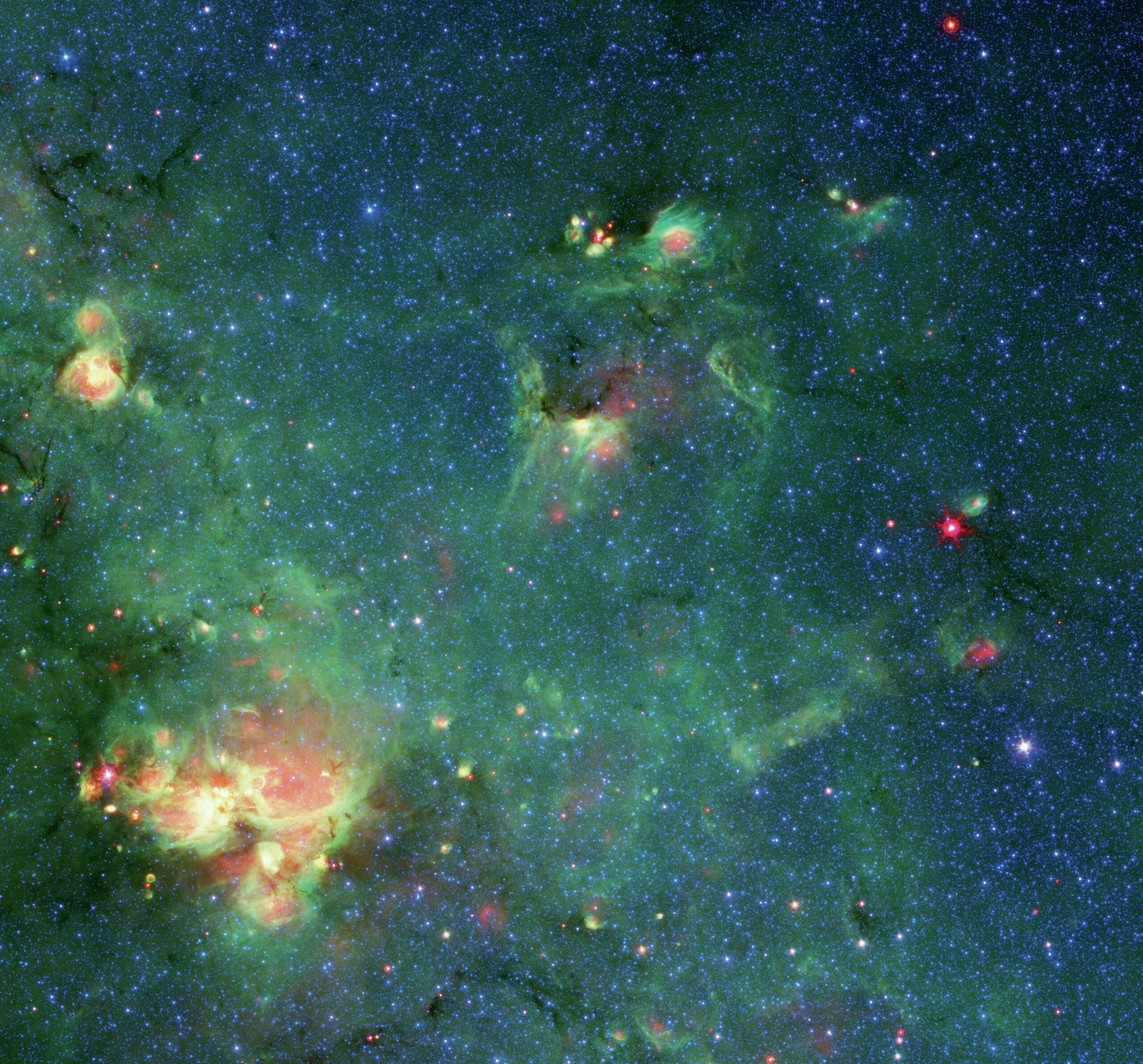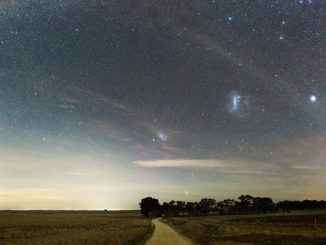 In 2014, a quite remarkable collage was released by scientists who used NASA’s Spitzer Space Telescope to image the entirety of the Milky Way in infrared light.
In 2014, a quite remarkable collage was released by scientists who used NASA’s Spitzer Space Telescope to image the entirety of the Milky Way in infrared light.
The resulting 360-degree panorama was called the GLIMPSE survey – the Galactic Legacy Infrared Mid- Plane Survey Extraordinaire. It consisted of more than two million individual images take by Spitzer, including this one, which has just been reprocessed and made available to the public. It shows a vast, dusty area of the Galaxy in the constellation of Sagittarius, the Archer, which is in the direction of the central regions of the Milky Way.
Reputedly, according to astronomer and space artist Robert Hurt of Caltech, who processed this image, the shape of Godzilla can be seen in the pattern made by the nebulae – the monster’s eyes and mouth are at the top, and the bright region to the lower left is its grabbing hand. That bright region is catalogued as W33, which is a giant molecular cloud located 7,800 light years away and about 33 light years in diameter. W33 is a frequent producer of massive stars, as a recent 2015 study discovered, finding 14 young, hot massive stars that have just formed sometime in the past four million years, as well as the 15-solar-mass protostar W33A, which is still in the process of forming inside a collapsing cloud of gas.
The Spitzer Space Telescope was adept at viewing star-forming regions such as W33 because its infrared detectors were able to see through the opaque interstellar dust that shrouds much starformation. Both Spitzer and its European infrared counterpart, the Herschel Space Observatory, are now defunct having exhausted the coolant required for their sensitive infrared detectors, but the mantle of infrared space astronomy will now be taken on by NASA’s James Webb Space Telescope.



